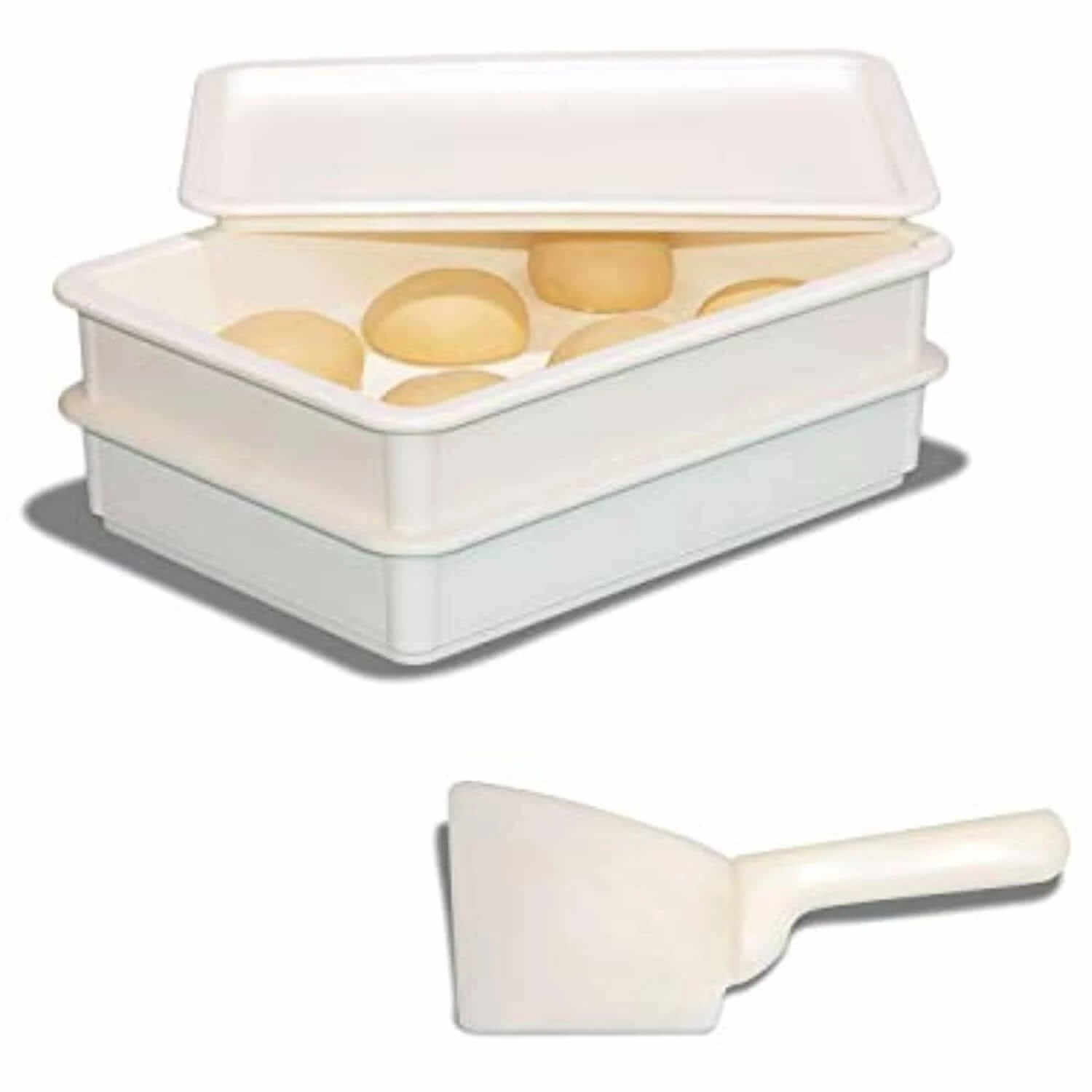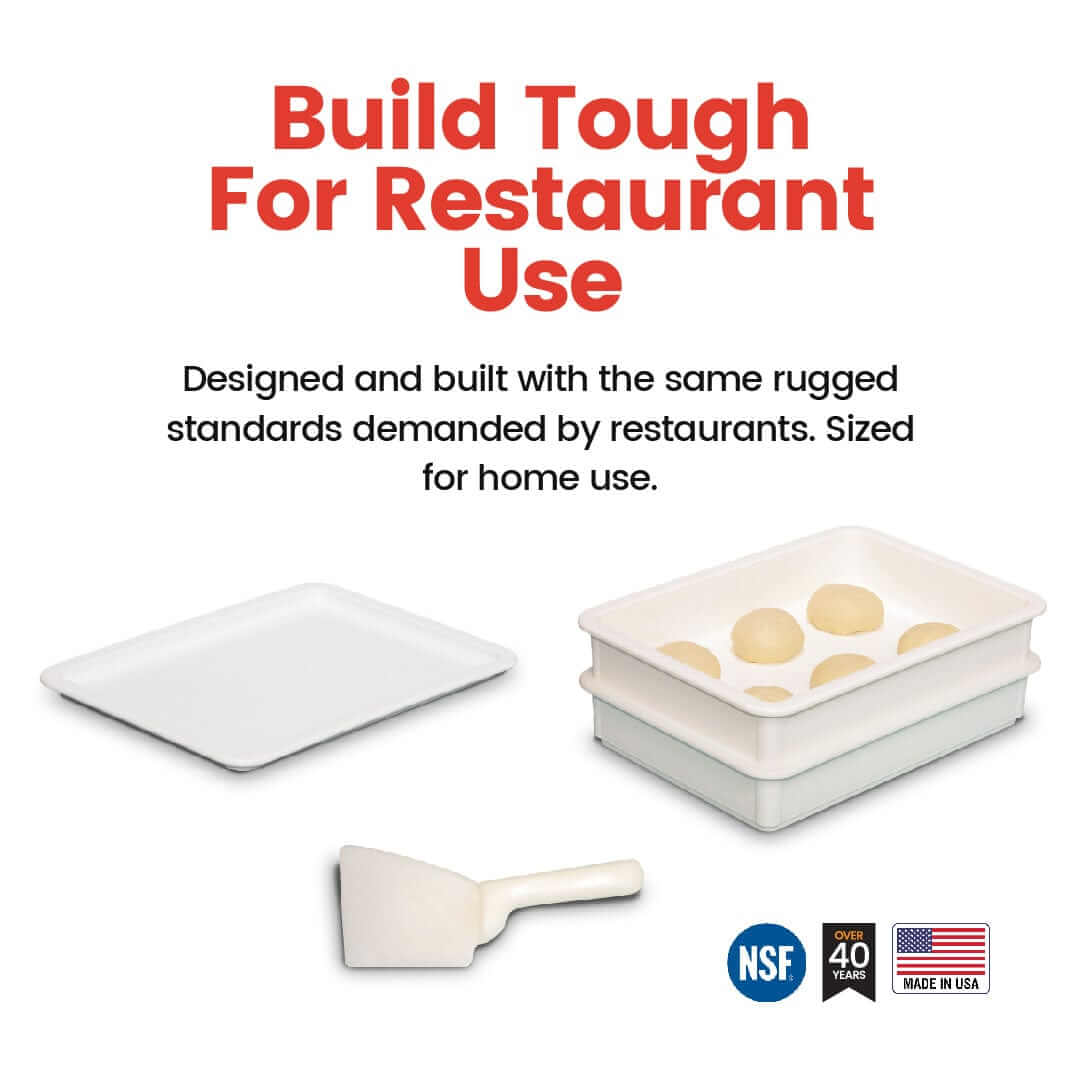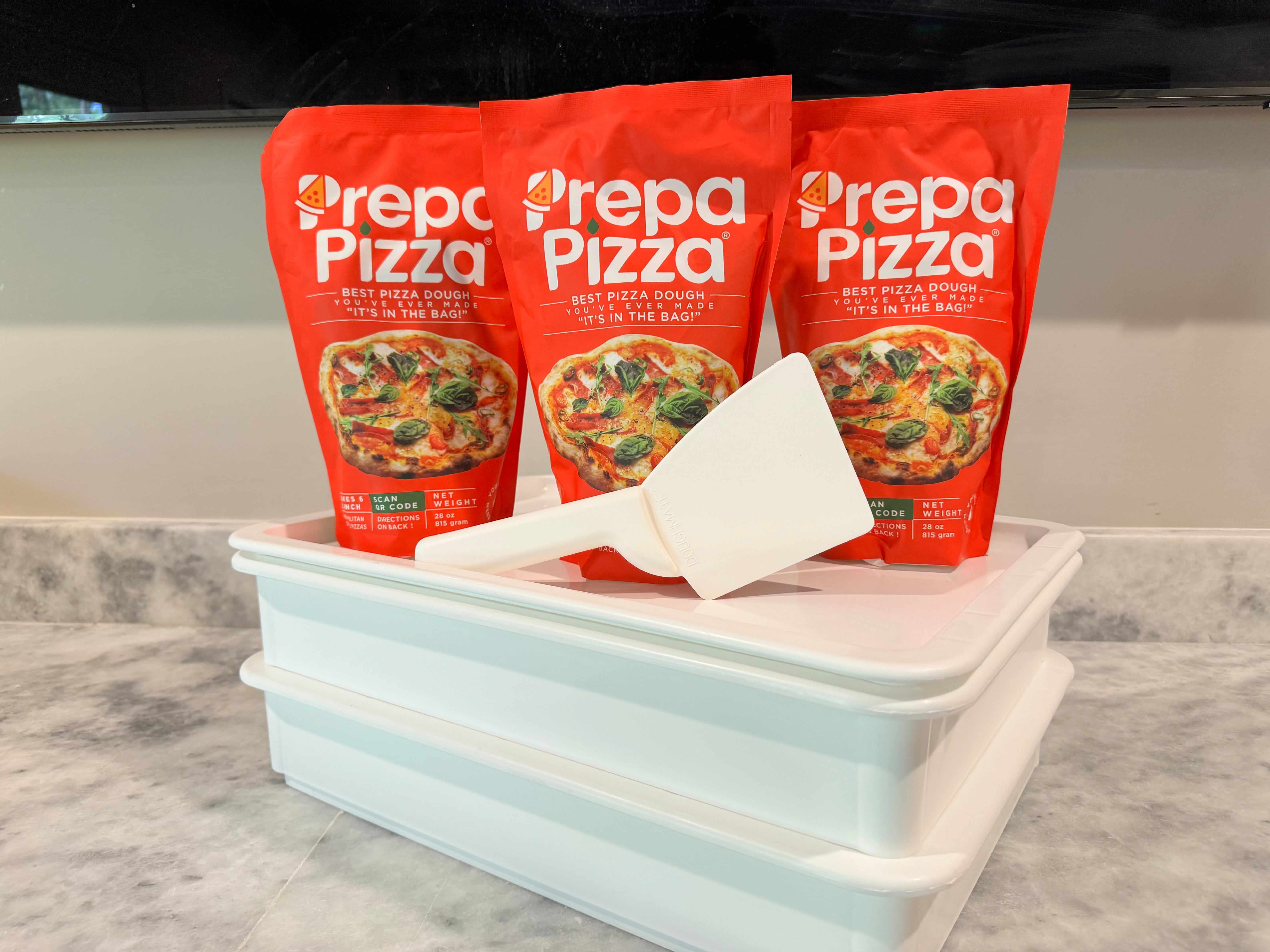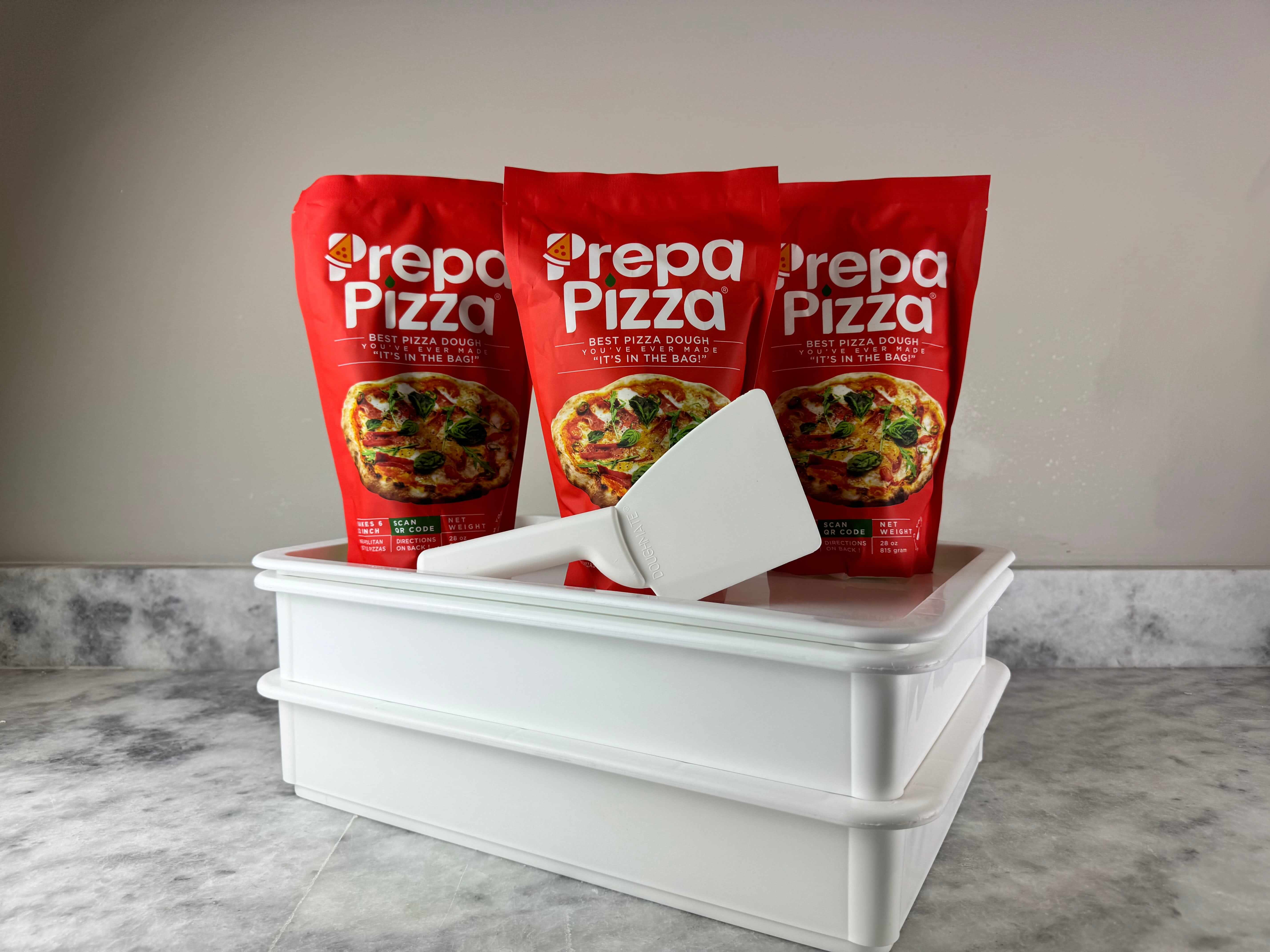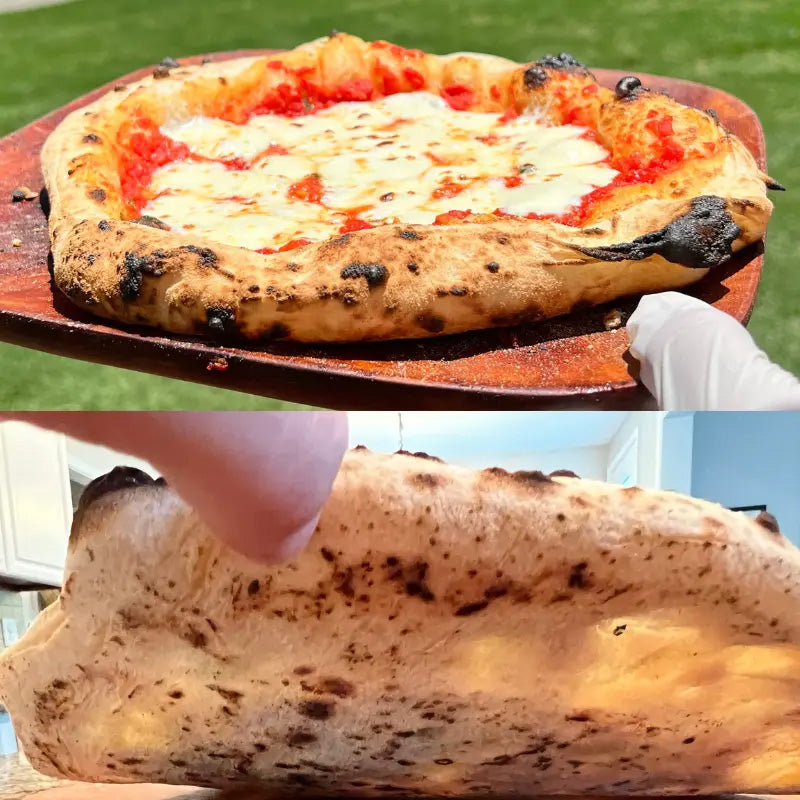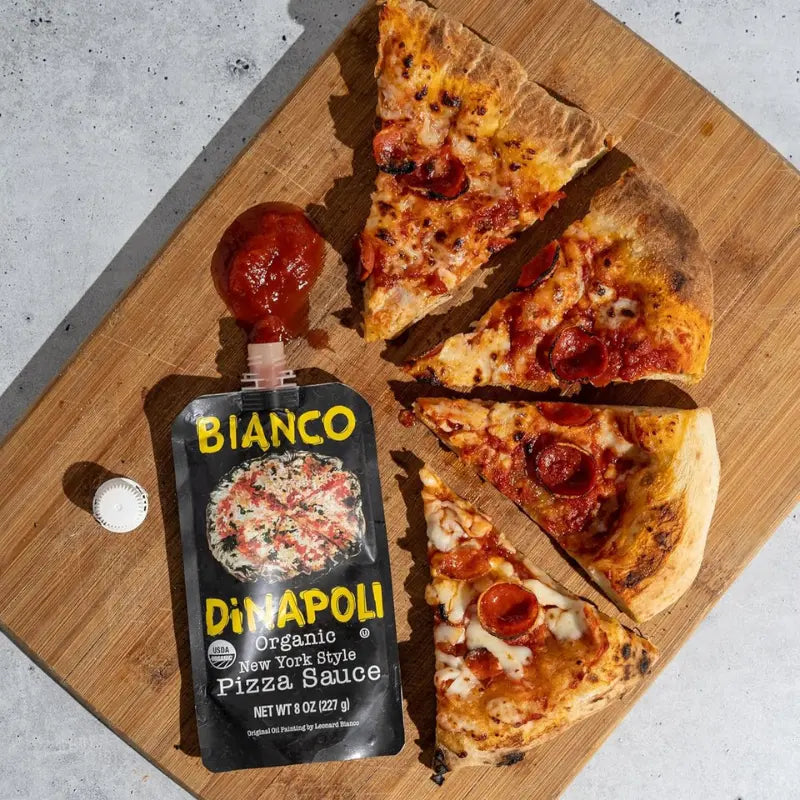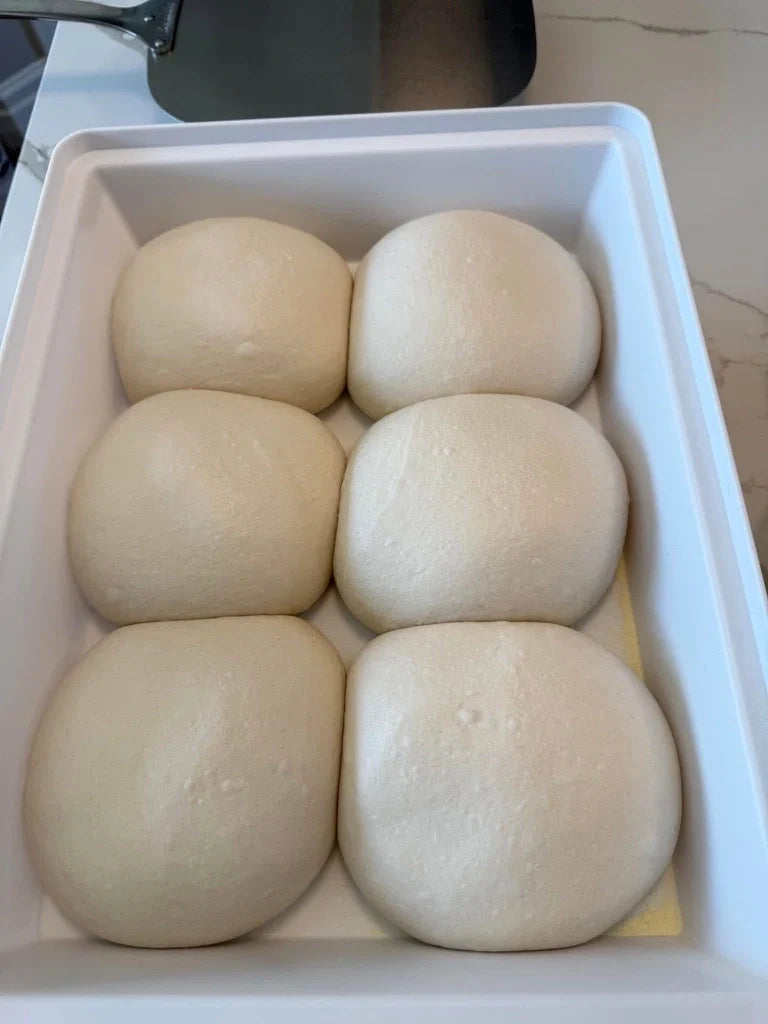
Dough Temperature Guide: Essential Tips for Perfect Baking Results
When it comes to baking, understanding dough temperature is crucial to achieving the perfect result. Maintaining your dough at an optimal temperature of around 75°F to 78°F (24°C to 25°C) ensures that yeast works efficiently, facilitating proper fermentation and a great rise. If you’re using Prepa Pizza's premade dough, knowing how to manage this aspect can elevate your pizza-making experience. You can discover the premium quality of our dough here.
Tracking the temperature of your dough not only influences flavor but also impacts texture and crust quality. Warm dough ferments faster, leading to a more complex flavor profile and airy crumb. As you explore this guide, you’ll learn effective techniques to maintain the right dough temperature, helping you perfect your pizzas every time.
Understanding Dough Temperature
Dough temperature is crucial in the baking process, influencing both fermentation and the final texture of your bread. Knowing how temperature impacts yeast activity can significantly improve your baked goods. Using premium quality premade dough like that from Prepa Pizza ensures you start with a solid foundation for your baking projects.
The Role of Dough Temperature in Baking
The temperature of your dough affects several key aspects of baking, including fermentation speed and yeast activity. Warmer dough typically encourages faster fermentation, which can lead to quicker rise times. However, it may also affect flavor development negatively if fermented too quickly.
Cold dough, on the other hand, ferments slowly, allowing for more complex flavors to develop. This slower process is essential in sourdough bread making, where time contributes to the richness of flavor. Ideally, maintaining an appropriate dough temperature ensures a balance between rise and flavor.
How Temperature Affects Fermentation
Fermentation is a biological process driven by yeast and bacteria interacting with the sugars in the dough. Warmer temperatures increase yeast activity, which accelerates fermentation. For instance, a dough temperature in the mid-70s Fahrenheit (around 24°C) is generally ideal for most yeast types.
If you prefer a slower fermentation for better flavor, like in sourdough, lowering the dough temperature to around 65°F (around 18°C) is effective. Cool temperatures allow for a more extended fermentation, enhancing taste and texture while developing the bread’s character.
Optimal Range for Different Doughs
Different types of dough require different optimal temperature ranges. For wheat-based yeast doughs, the ideal temperature is typically between 75°F to 78°F (24°C to 26°C). This range supports lively yeast activity, promoting a good rise and texture.
For sourdough, a cooler dough temperature around 65°F (18°C) suits slower fermentation, which is crucial for developing complex flavors. Understanding these variations can help you achieve superior results, especially when working with high-quality premade dough like that from Prepa Pizza, ensuring consistency and excellence in every bake.
Key Factors Influencing Dough Temperature
Understanding the critical factors affecting dough temperature is essential for achieving the best baking results. Properly managing these elements can ensure your bread, pizza, or other dough-based products turn out perfectly. Here, we focus on three key influences: water temperature, room temperature, and flour temperature.
Water Temperature and Its Importance
Water temperature plays a significant role in the dough-making process. Ideal water temperature for yeast activation generally falls between 90°F to 100°F (32°C to 38°C). If the water is too cold, it can slow down fermentation, while water that is too hot can kill the yeast.
For Prepa Pizza's premade dough, the right water temperature helps maintain a balanced development of flavors and textures. When using this dough, ensure your added water is within the recommended temperature range to achieve optimal results. The hydration level also affects dough temperature, as adding warm water can elevate overall dough warmth.
Room Temperature and Ambient Conditions
The temperature of your workspace significantly impacts dough fermentation and proofing times. A warm room typically speeds up the fermentation process, while colder conditions can slow it down considerably. For consistent results, aim for a room temperature around 75°F (24°C).
Before working with Prepa Pizza's premade dough, ensure your kitchen is adequately warmed, especially during colder seasons. Ambient humidity can also affect how dough behaves; higher humidity may require adjustments in flour quantity to maintain the right balance.
Flour Temperature and Storage
Flour temperature is another critical aspect, as it varies based on storage conditions and how recently it was milled. Ideally, flour should be stored in a cool, dry place to maintain its freshness and quality. The temperature of the flour affects dough temperature; if it’s too warm, it can lead to premature fermentation.
For best results, refrigerate flour if storing it for extended periods. When combining flour with other ingredients in Prepa Pizza's premade dough, be mindful of its temperature. Using cooler flour can help maintain manageable dough temperatures, promoting better fermentation and flavor development.
Measuring and Achieving Desired Dough Temperature
Achieving the right dough temperature is crucial for optimal fermentation and baking. With Prepa Pizza's premade dough, understanding how to measure and adjust temperature can enhance your pizza-making experience.
Using Thermometers for Accurate Readings
To ensure precision, always use a reliable thermometer when measuring dough temperature. Infrared thermometers are convenient for quick surface readings, while instant-read thermometers are ideal for checking internal temperatures.
You want your dough temperature to fall between 23°C/74°F and 25.5°C/78°F for best results. Surrounding conditions, including room temperature and humidity, can influence readings. Check at various points in the mixing process to get an accurate assessment.
Adjusting Ingredients to Control Temperature
Controlling the temperature of your dough starts with your ingredients. Pay attention to the temperatures of flour, water, and other components. For instance, if your room temperature is high, use colder water to balance it out.
Consider the hydration level as well; higher hydration can increase dough temperature during mixing. Establish a routine by always measuring the temperature of each ingredient to keep it consistent. Use a table like this for quick reference:
| Ingredient | Temperature (°C) |
|---|---|
| Flour | 20 |
| Water | Adjust accordingly |
| Ambient | Check regularly |
Impact of Mixing Times and Friction Factor
Mixing time significantly impacts dough temperature. Longer mixing times generate more friction, which raises the temperature. Aim for shorter mixing times if the dough temperature is borderline high.
Understanding the friction factor of your mixing equipment is essential. Different mixers can cause varying levels of friction, affecting dough warmth. Be mindful of your equipment and adjust your mixing strategy accordingly to keep temperatures in check.
Calculating Final Temperature Targets
Calculating temperature is vital for achieving your final dough temperature. Start with the desired temperature and account for all ingredient temperatures and the friction generated by mixing. Use the equation:
Final Dough Temperature (FDT) = Room Temperature + Flour Temperature + Desired Water Temperature - 0.5 x Mixing Time
For example, if your room temperature is 23°C, flour temperature is 20°C, and you want a final temperature of 25°C, you may need to adjust your water temperature to about 17°C. This calculation ensures you reach the ideal fermentation temperature.
With careful measurement and adjustments, you can effectively manage your dough temperature and improve your baking results using Prepa Pizza's high-quality premade dough.
The Impact of Dough Temperature on Fermentation Stages
Dough temperature significantly influences each fermentation stage, affecting the quality and strength of your bread. Understanding this impact helps you achieve optimal results while using Prepa Pizza's premade dough, made from premium ingredients for a restaurant-quality outcome. You can find more details about our dough here.
Bulk Fermentation and Dough Strength
During bulk fermentation, dough temperature plays a key role in developing its strength. Warmer dough ferments faster, enhancing yeast activity and producing gases that help leavening. The ideal temperature range for wheat-based dough is between 75°F and 78°F.
If the dough is too cold, fermentation can slow, resulting in a weaker structure. Monitoring temperature throughout this stage is crucial for achieving the desired gluten network. This network provides the dough with elasticity and strength, directly impacting the final product.
Proofing Stage: Timing and Temperature
The proofing stage is where dough rises after shaping, and temperature influences how effectively it expands. Warmer dough tends to rise faster but may risk over-proofing, which weakens gluten structure. In contrast, cooler dough could result in extended proofing times, providing more flavor but potentially altering texture.
Maintaining a consistent temperature between 75°F and 78°F ensures optimal timing and creates a well-structured loaf. Using Prepa Pizza's premade dough allows you to control these variables better, leading to a more consistent and enjoyable outcome.
Fermentation Time and Gluten Network Development
Fermentation time is integral to gluten network development, where temperature significantly impacts the dough's final characteristics. As dough ferments, gluten proteins align and strengthen, creating the necessary structure.
For instance, a temperature below the ideal range can extend fermentation time, allowing for better flavor without compromising texture. However, excessively high temperatures may lead to a breakdown in the gluten network, causing a dense final product.
To achieve the desired balance, it's important to monitor the fermentation process carefully. With Prepa Pizza's dough, you get a quality product designed to adapt to your temperature management, ensuring superior results.
Effects of Dough Temperature on the Baking Process
Dough temperature plays a crucial role in the quality of baked goods. It affects important aspects such as oven spring, crust characteristics, and the development of flavors through various reactions. Understanding these effects can enhance your baking, especially with high-quality premade dough like Prepa Pizza's premade dough.
Oven Spring and Expansion
Oven spring refers to the rapid rise of dough during the first few minutes of baking. This phenomenon is primarily influenced by the temperature of the dough prior to baking. Warmer dough often results in a more vigorous oven spring.
To achieve optimal oven spring:
- Dough Temperature: Target a dough temperature between 75°F and 80°F (24°C to 27°C) for the best results.
- Yeast Activity: Warm temperatures activate yeast, producing gas that expands the dough.
- Moisture Retention: Proper dough temperature helps maintain moisture, contributing to a light and airy structure.
Crust Color and Texture Formation
The crust's appearance and texture are significantly influenced by the baking temperature and the dough's initial temperature. A higher dough temperature leads to a thicker, crispier crust.
Key factors include:
- Maillard Reaction: This chemical reaction occurs when amino acids and reducing sugars react under heat, contributing to a rich brown color and complex flavors.
- Steam Creation: Hot dough generates steam, which helps achieve a glossy finish and a light texture.
- Cooling Time: Allowing the crust to cool properly can enhance its crunchiness, making it more enjoyable.
Gelatinization, Maillard Reaction, and Caramelization
Several crucial reactions occur during baking that affect the dough's final characteristics. Understanding them can guide your baking process.
- Gelatinization: The starches in the dough absorb water and swell, helping to create structure. This process is critical for achieving the desired bread texture.
- Maillard Reaction: As mentioned, this reaction not only contributes to crust color but also enhances flavor complexity.
- Caramelization: The sugars in the dough begin to brown and develop flavor as they break down under heat. This contributes to a deeper flavor profile in your baked goods.
Utilizing high-quality ingredients, such as those found in Prepa Pizza's premade dough, can enhance these reactions, leading to superior results in your baking.
Practical Tips for Managing Dough Temperature
Managing dough temperature is crucial for successful baking. With the right approach, you can optimize your results whether baking in a warm or cold environment. Utilizing quality ingredients, such as Prepa Pizza's premium premade dough, ensures a consistent foundation for your baking endeavors.
For more information on Prepa Pizza's offering, visit the Prepa Pizza Dough Kit.
Adapting to Different Climates
Adjusting your methods based on climate can greatly influence your dough's performance. In hot and humid conditions, it’s often beneficial to aim for a cooler dough temperature, around 73°F. Consider refrigerating your premade dough from Prepa Pizza before use or using cooler water in your recipes.
Conversely, in cooler climates, achieving a slightly warmer dough temperature, around 78°F to 80°F, can enhance yeast activity. You might use warm water or allow your dough to sit in a warm area, such as near a preheating oven. Monitor the temperature using a thermometer to achieve optimal results.
Steam and Preheat Considerations
Steam plays a vital role in the baking process, helping create a crispy crust. To manage dough temperature effectively, preheating your oven is essential. Set your oven to the desired temperature and allow ample time for it to reach that level before placing your dough inside.
Using a baking stone or steel can help retain heat, promoting better dough rise. Consider adding steam in the first few minutes of baking by placing a pan of water at the bottom of the oven. This technique will enhance the dough’s surface, leading to improved texture and crust.
Controlling Proofing and Baking Time
Proofing is the process of allowing your dough to rise, which is sensitive to temperature. When proofing premade dough from Prepa Pizza, aim for a warm, draft-free area to encourage yeast activity. Experience tells you that proofing in temperatures around 75°F will yield the best results.
Adjust your proofing time based on the ambient temperature and the size of your dough. Warmer conditions may shorten proofing time, while cooler environments require more time. Use the “poke test” to assess readiness: lightly press the dough, and if it springs back slowly, it’s ready to bake.
Using Sourdough Starter Effectively
If you enjoy baking with a sourdough starter, managing its temperature is essential. Keep your starter at room temperature for optimal fermentation and use it when it's bubbly and active. When incorporating it into your dough, consider the temperature of the environment, as affects the fermentation speed.
In warmer temperatures, reduce the amount of starter used to prevent overly rapid fermentation. In cooler conditions, you might increase the starter quantity to maintain a balanced dough. Remember, maintaining the right dough temperature during fermentation will significantly impact flavor and texture.
Frequently Asked Questions
Understanding dough temperature is essential for successful bread baking. This section addresses common queries regarding ideal temperatures for proofing, how temperature impacts baking, and techniques for achieving optimal results with your dough, including those using Prepa Pizza's premade dough.
What is the ideal proofing temperature for sourdough bread?
The ideal proofing temperature for sourdough bread typically ranges between 75°F and 78°F (24°C to 26°C). This range promotes healthy yeast and bacterial activity, leading to optimal fermentation. For best results, you can use Prepa Pizza's premade dough, which is optimized for such environments.
How does dough temperature affect bread baking?
Dough temperature influences fermentation rates and enzyme activity, directly impacting flavor and texture. Warmer dough promotes faster fermentation, while cooler dough may lead to a slower rise. Consistency in temperature helps ensure even baking throughout.
What is the desired dough temperature when baking with yeast?
When baking with yeast, the desired dough temperature usually falls between 75°F and 78°F (24°C to 25°C). This range is crucial for achieving good yeast performance, which is essential for proper bread structure and rise.
How can one calculate the finished dough temperature for optimal results?
To calculate the finished dough temperature, you can use the following formula: Desired dough temperature = (Water temperature + Room temperature + Flour temperature) / 3. This calculation helps maintain consistent results and allows you to adjust based on your specific baking environment.
At what temperature does dough over-proof and how can this be prevented?
Dough typically begins to over-proof above 80°F (27°C). When dough over-proofs, it can collapse and lose its structure. To prevent this, monitor the dough closely and consider adjusting your environment or using a cooler method for fermentation.
What are the guidelines for adjusting dough temperature in different baking environments?
To adjust dough temperature, consider the ambient temperature and the temperature of your ingredients. If working in a warm environment, cooler water can help lower the overall dough temperature. Conversely, if it's cold, warm water can increase it to the desired range. Prepa Pizza's premade dough is formulated to maintain consistency across various environments.




